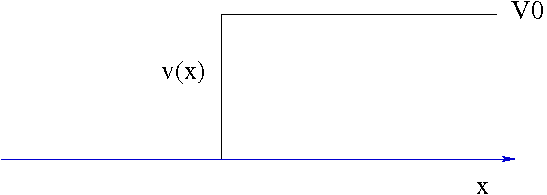Sample questions for exam 2
(Difference between revisions)
| Line 1: | Line 1: | ||
| − | A particle is incident from the left with energy <math>E > V_0</math>. Compute the reflection coefficient. | + | 1) A particle is incident from the left with energy <math>E > V_0</math>. Compute the reflection coefficient. |
[[Image:Steppotential.gif]] | [[Image:Steppotential.gif]] | ||
| − | Match the figures on the left, with the appropriate one on the right | + | 2) Match the figures on the left, with the appropriate one on the right |
[[Image:Potentials_cartoon.gif]] | [[Image:Potentials_cartoon.gif]] | ||
| − | Consider a particle passing over a rectangular potential barrier from left to right. Write down the general form of \Psi(x) in the three regions. The use the boundary conditions to derive 4 equations for the 5 unknown coefficients. For 10 bonus points, use these 4 equations to derive an expression for the transmission coefficient. | + | 3) Consider a particle passing over a rectangular potential barrier from left to right. Write down the general form of <math>\Psi(x)</math> in the three regions. The use the boundary conditions to derive 4 equations for the 5 unknown coefficients. For 10 bonus points, use these 4 equations to derive an expression for the transmission coefficient. |
Revision as of 18:05, 28 February 2008
1) A particle is incident from the left with energy E > V0. Compute the reflection coefficient.
2) Match the figures on the left, with the appropriate one on the right
3) Consider a particle passing over a rectangular potential barrier from left to right. Write down the general form of Ψ(x) in the three regions. The use the boundary conditions to derive 4 equations for the 5 unknown coefficients. For 10 bonus points, use these 4 equations to derive an expression for the transmission coefficient.

